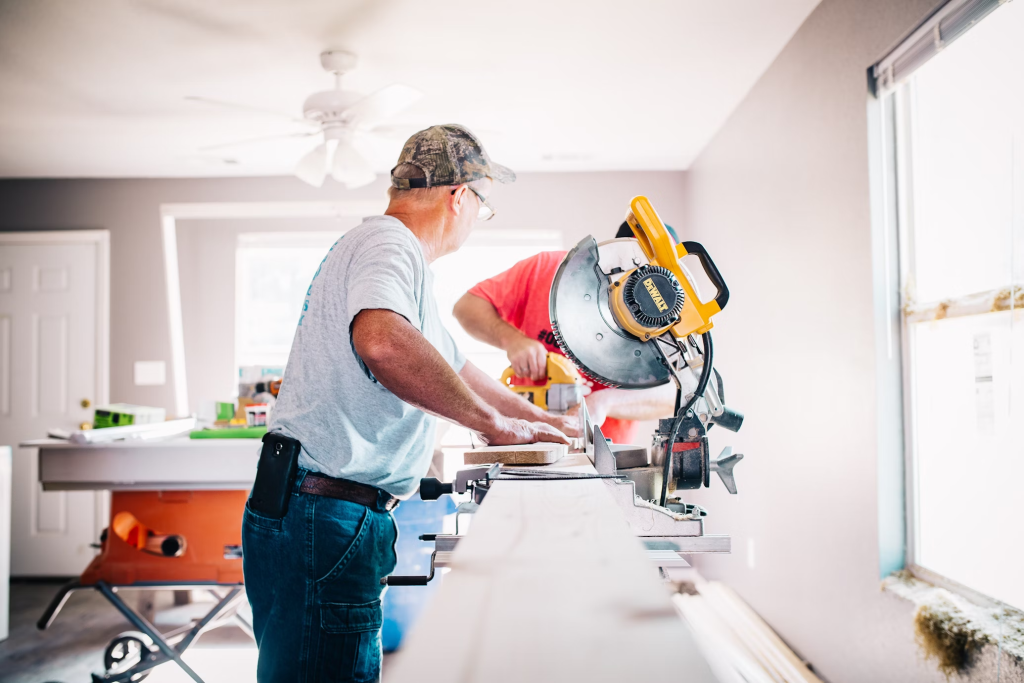Renovating your entire home is a significant yet fulfilling endeavour that can enhance both functionality and value. Whether your goal is to modernise outdated spaces, improve energy efficiency, or boost market appeal, a strategic approach is essential. Start by setting a realistic budget, factoring in construction costs, permits, and unforeseen expenses. Careful planning ensures a seamless process, from layout adjustments to material selection.

Collaborating with architects, designers, and builders helps bring your vision to life while adhering to regulations. During execution, project management is key to maintaining timelines and quality. Once completed, post-renovation steps include final inspections, deep cleaning, and furnishing. A well-executed renovation not only improves your living experience but also adds long-term value to your property, making it a worthwhile investment in the Australian housing market.
Click He Has A Good Point For More Details
A Step-By-Step Guide To Home Renovations
Planning Your House Renovation
Before embarking on a home renovation, thorough planning is crucial to avoid delays, budget blowouts, or subpar results. Start by assessing your needs and goals—whether it’s maximising space, improving energy efficiency, or enhancing aesthetics. Prioritise areas that require the most attention and consider long-term needs, especially if you plan to stay in the home for years. Set a realistic budget by researching renovation costs in Australia and allocating a 10–20% buffer for unforeseen expenses.
Obtain multiple quotes from contractors and suppliers to ensure value for money. Check local council regulations for required permits, particularly for structural changes or heritage-listed properties. Ensure compliance with Australian Building Codes. Decide between a DIY approach or hiring professionals. While DIY can reduce costs, professional builders, architects, and designers offer expertise, ensuring quality workmanship and adherence to regulations.
Designing Your Renovation
The design phase is essential to ensuring your home renovation aligns with your expectations and lifestyle. Begin by creating a well-thought-out layout plan with an architect or design software, prioritising efficient space utilisation and functionality. Open-plan designs can enhance flow and create a spacious, modern feel. When selecting materials and finishes, opt for durable, sustainable choices suited to Australia’s climate.
Energy-efficient windows, insulation, and appliances will improve comfort and reduce costs. Choose colours, textures, and finishes that reflect your personal style. Focus on key areas such as the kitchen, with upgraded cabinetry, benchtops, and appliances, and the bathroom, modernising tiles, fixtures, and lighting. Enhance living areas with natural light, improve bedrooms with ample storage, and upgrade outdoor spaces with decks or landscaping.
Executing The Renovation
After finalising your renovation plan and design and obtaining the necessary permits, you are ready to commence the physical transformation of your space. This stage involves executing the planned modifications, whether it be structural changes, installations, or aesthetic upgrades.
Skilled tradespeople, including builders, electricians, and plumbers, may be required to ensure the work meets safety and quality standards. It’s essential to follow your timeline, budget, and design specifications carefully to avoid delays or unexpected costs. Proper coordination and supervision will help achieve a successful and seamless renovation process.
Step-By-Step Execution
Demolition And Preparation
Demolish and clear away any unwanted structures, outdated fittings, and damaged elements to create a clean slate for construction. Ensure all waste materials are disposed of in an environmentally responsible manner, strictly following local regulations. Thoroughly prepare the site by levelling, clearing debris, and making it suitable for the upcoming build.
Structural Work
Begin by identifying and resolving any foundational issues to ensure structural stability. If necessary, modify the existing framework by constructing extensions or removing load-bearing walls to optimise space. Proceed with the installation of new walls, windows, and doors, ensuring proper alignment, insulation, and functionality to enhance the building’s integrity.
Electrical And Plumbing Work
Upgrade outdated electrical wiring and lighting fixtures to enhance safety, reliability, and energy efficiency. Modernise or replace ageing plumbing systems to prevent leaks, improve water flow, and ensure long-term functionality. Adhere to Australian safety and efficiency standards to guarantee compliance, reduce hazards, and enhance overall property value and sustainability.
Interior And Exterior Work
Install various types of flooring, including hardwood, laminate, tiles, and carpets, ensuring durability and aesthetic appeal. Lay tiles with precision for both interior and exterior spaces. Construct and refurbish ceilings to enhance structural integrity. Apply professional painting and decorative finishes to walls and surfaces. Upgrade roofing and exterior façades for improved appearance and protection.
Fixtures And Fittings
Install brand-new cabinetry, stylish benchtops, and spacious wardrobes to enhance storage and aesthetics. Professionally fit modern kitchen and bathroom fixtures for functionality and elegance. Seamlessly integrate cutting-edge smart home technology, including automated lighting, climate control, and security systems, to improve convenience, energy efficiency, and overall home comfort in Australia.
Final Touches And Cleaning
Inspect the property thoroughly for any defects, addressing and rectifying any issues to ensure a flawless finish. Perform a comprehensive deep clean, leaving the home spotless and inviting. Thoughtfully style the space with carefully selected furniture, décor, and accessories, enhancing its aesthetic appeal and creating a warm, welcoming atmosphere.
Post-Renovation Considerations
After completing the renovation, there are still crucial steps to take to ensure your home is in the best possible condition. Start by conducting a thorough inspection to check for any overlooked defects or unfinished work. Clean the entire space to remove dust, debris, and construction residue.
Test all installed systems, such as plumbing, electrical, and appliances, to confirm they function correctly. Ensure proper ventilation to eliminate lingering odours. Finally, consider professional maintenance services and aesthetic touch-ups to perfect the finishing touches and maintain your home’s quality over time.
Inspection And Quality Check
- Walk through the house to ensure everything is done correctly.
- Address any issues before final payments to contractors.
Obtain Compliance Certificates
- Get electrical, plumbing, and structural compliance certificates.
- Ensure warranties and guarantees are documented.
Set Up Home Maintenance Plans
- Schedule periodic maintenance for plumbing, electrical, and HVAC systems.
- Protect materials like timber and stone from damage over time.
- Keep track of repair schedules and contractor details.
Enjoy Your Renovated Home!
- Organise a housewarming to celebrate your new space.
- Make adjustments based on actual usage and comfort.
- Plan future small updates to maintain the home’s appeal and value.
Conclusion
Renovating your entire home is an exciting yet intricate process that demands careful planning, patience, and a skilled team. Whether you’re modernising your space for comfort, boosting resale value, or enhancing functionality, a well-thought-out renovation can completely transform your living environment. The process involves several crucial steps, including setting a budget, designing a vision, hiring reputable professionals, and managing construction and finishing touches.
Thorough research and realistic expectations will help you navigate potential challenges, ensuring a smoother renovation experience. Selecting reliable tradespeople, maintaining open communication, and staying flexible with unexpected adjustments are key to achieving successful results. By staying organised and committed to your vision while allowing room for adaptability, you can turn your home into a beautifully upgraded space that meets both your aesthetic and practical needs.
Frequently Ask Question
Do I Need Council Approval For My Renovation?
It depends on the extent of your renovation. Minor cosmetic changes usually don’t require approval, but structural changes, extensions, or major alterations typically do. Check with your local council to understand specific requirements and ensure compliance with building regulations. Failing to obtain approval can result in fines or issues when selling your home.
How Much Does A Full Home Renovation Cost In Australia?
Costs vary widely based on size, materials, and location, but a full-house renovation typically starts from $100,000 and can exceed $500,000 for high-end projects. Budgeting for unexpected costs (10-20% extra) is essential. Labour and material costs in Australia are higher than in some other countries, so getting multiple quotes is recommended. Consider the return on investment if you plan to sell in the future.
Should I Renovate My House All At Once Or In Stages?
Renovating all at once can be more efficient and cost-effective, but it requires a larger upfront budget. Staging renovations allows you to spread costs over time but may prolong disruption and lead to inconsistencies in design. If you’re living in the home during the renovation, staging may be more practical. Consider your financial situation and lifestyle needs before deciding.
